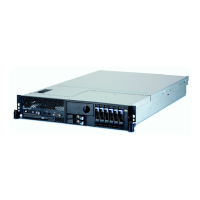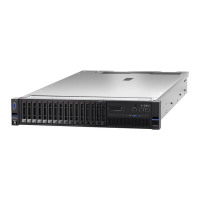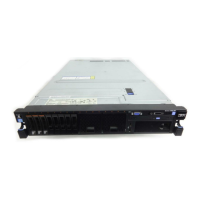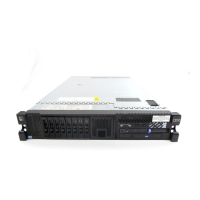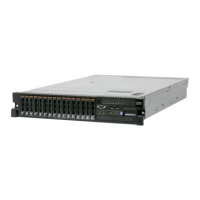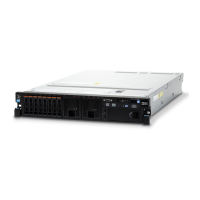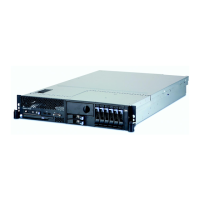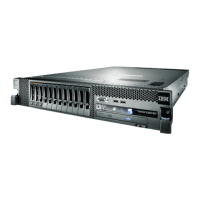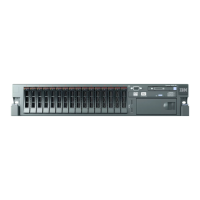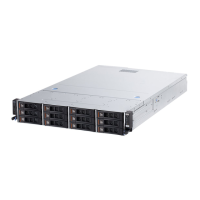v The server supports a maximum of 16 DIMMs (single-rank, dual-rank, or
quad-rank) on the base system board. If you mix single-rank, dual-rank, or
quad-rank DIMMs in the server, quad-rank DIMMs must be installed first.
Note: To determine the type of a DIMM, see the label on the DIMM. The
information on the label is in the format xxxxx nRxxx PC3-xxxxx-xx-xx-xxx. The
numeral in the sixth numerical position indicates whether the DIMM is
single-rank (n=1) or dual-rank (n=2).
v The DIMM options that are available for the server are 2 GB, 4 GB, 8 GB, and 16
GB (when available)
v The server supports memory sparing. Memory sparing reserves memory
capacity for failover in the event of a DIMM failure, and the reserved capacity is
subtracted from the total available memory. Memory sparing provides less
redundancy than memory mirroring does. If a predetermined threshold of
correctable errors is reached, the contents of the failing DIMM are copied to the
spare memory, and the failing DIMM or rank is disabled. To enable memory
sparing through the Setup utility, select System Settings > Memory.
v The server system board supports a minimum of 2 GB and a maximum of 256
GB of system memory. However, the server can support an additional 256 GB of
memory when a 16-DIMM optional memory tray is installed in the server, and
an additional 512 GB of memory when an optional 32-DIMM IBM MAX5 for
System x memory expansion module is attached to the server, for a total of 1 TB
of system memory.
Note: The amount of usable memory is reduced depending on the system
configuration. A certain amount of memory must be reserved for system
resources. To view the total amount of installed memory and the amount of
configured memory, run the Setup utility. For additional information, see
Chapter 3, “Configuring the server,” on page 131.
v The server system board provides four memory ports (memory channels) for
each microprocessor and each memory port supports up to four DIMMs. The
optional memory tray also provides four memory ports that supports up to four
DIMMs per memory port.
v The following table shows the DIMM connectors on the system board and the
memory tray that are associated with each microprocessor when the memory
tray is also installed in the server:
Table 6. DIMM connectors associated with each microprocessor
Microprocessor DIMM connectors
Microprocessor socket 1 1 through 16
Microprocessor socket 2 17 through 32
Note: When the memory tray is not installed in the server, DIMMs 1 through 16
are solely associated with microprocessor 1. Microprocessor 2 has access to
DIMMs 1 through 16, but access is through microprocessor 1. This is important
if load balancing is a necessity for your operating system or software load.
v When you replace a DIMM, the server provides automatic DIMM enablement
capability without you having to go to Setup to enable the new DIMM
manually.
v DIMMs must be installed in matched pairs for non-mirroring mode or matched
sets of four for memory mirroring mode.
Chapter 2. Installing optional devices 53
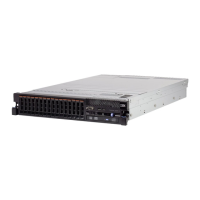
